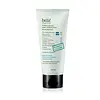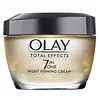What's inside
What's inside
 Key Ingredients
Key Ingredients

 Benefits
Benefits

 Concerns
Concerns

 Ingredients Side-by-side
Ingredients Side-by-side

Myristic Acid
CleansingWater
Skin ConditioningGlycerin
HumectantDipropylene Glycol
HumectantStearic Acid
CleansingPotassium Hydroxide
BufferingGlycol Distearate
EmollientGlyceryl Stearate
EmollientCocamidopropyl Betaine
CleansingPEG-100 Stearate
Sodium Methyl Cocoyl Taurate
CleansingHydrogenated Polydecene
EmollientPEG-40 Hydrogenated Castor Oil
EmulsifyingMelaleuca Alternifolia Leaf Oil
AntioxidantCalendula Officinalis Flower Extract
MaskingNepeta Cataria Extract
TonicAvena Sativa Kernel Extract
AbrasiveRubus Idaeus Leaf Extract
Skin ConditioningStellaria Media Extract
Skin ConditioningBaptisia Tinctoria Root Extract
Skin ConditioningArctium Lappa Root Extract
Skin ConditioningLavandula Angustifolia Flower Extract
CleansingRosmarinus Officinalis Leaf Extract
AntimicrobialEchinacea Angustifolia Extract
MoisturisingSalix Alba Bark Extract
AstringentDextrin
AbsorbentTocopheryl Acetate
Antioxidant1,2-Hexanediol
Skin ConditioningTrisodium EDTA
Citrus Aurantium Bergamia Fruit Oil
MaskingEucalyptus Globulus Leaf Oil
PerfumingRosmarinus Officinalis Leaf Oil
MaskingParfum
MaskingCitral
PerfumingCitronellol
PerfumingLimonene
PerfumingGeraniol
PerfumingLinalool
PerfumingMyristic Acid, Water, Glycerin, Dipropylene Glycol, Stearic Acid, Potassium Hydroxide, Glycol Distearate, Glyceryl Stearate, Cocamidopropyl Betaine, PEG-100 Stearate, Sodium Methyl Cocoyl Taurate, Hydrogenated Polydecene, PEG-40 Hydrogenated Castor Oil, Melaleuca Alternifolia Leaf Oil, Calendula Officinalis Flower Extract, Nepeta Cataria Extract, Avena Sativa Kernel Extract, Rubus Idaeus Leaf Extract, Stellaria Media Extract, Baptisia Tinctoria Root Extract, Arctium Lappa Root Extract, Lavandula Angustifolia Flower Extract, Rosmarinus Officinalis Leaf Extract, Echinacea Angustifolia Extract, Salix Alba Bark Extract, Dextrin, Tocopheryl Acetate, 1,2-Hexanediol, Trisodium EDTA, Citrus Aurantium Bergamia Fruit Oil, Eucalyptus Globulus Leaf Oil, Rosmarinus Officinalis Leaf Oil, Parfum, Citral, Citronellol, Limonene, Geraniol, Linalool
Water
Skin ConditioningGlycerin
HumectantNiacinamide
SmoothingIsohexadecane
EmollientDimethicone
EmollientIsopropyl Isostearate
EmollientStearyl Alcohol
EmollientPolyacrylamide
Panthenol
Skin ConditioningTocopheryl Acetate
AntioxidantSodium Ascorbyl Phosphate
AntioxidantRetinyl Propionate
Skin ConditioningCamellia Sinensis Leaf Extract
AntimicrobialBHT
AntioxidantTapioca Starch
C13-14 Isoparaffin
EmollientCaprylyl Glycol
EmollientDimethiconol
EmollientLaureth-7
EmulsifyingCetearyl Glucoside
EmulsifyingCetearyl Alcohol
EmollientStearic Acid
CleansingPalmitic Acid
EmollientCetyl Alcohol
EmollientBehenyl Alcohol
EmollientDisodium EDTA
PEG-100 Stearate
Titanium Dioxide
Cosmetic ColorantPolymethylsilsesquioxane
1,2-Hexanediol
Skin ConditioningPhenoxyethanol
PreservativeParfum
MaskingWater, Glycerin, Niacinamide, Isohexadecane, Dimethicone, Isopropyl Isostearate, Stearyl Alcohol, Polyacrylamide, Panthenol, Tocopheryl Acetate, Sodium Ascorbyl Phosphate, Retinyl Propionate, Camellia Sinensis Leaf Extract, BHT, Tapioca Starch, C13-14 Isoparaffin, Caprylyl Glycol, Dimethiconol, Laureth-7, Cetearyl Glucoside, Cetearyl Alcohol, Stearic Acid, Palmitic Acid, Cetyl Alcohol, Behenyl Alcohol, Disodium EDTA, PEG-100 Stearate, Titanium Dioxide, Polymethylsilsesquioxane, 1,2-Hexanediol, Phenoxyethanol, Parfum
 Reviews
Reviews

Ingredients Explained
These ingredients are found in both products.
Ingredients higher up in an ingredient list are typically present in a larger amount.
1,2-Hexanediol is a synthetic liquid and another multi-functional powerhouse.
It is a:
- Humectant, drawing moisture into the skin
- Emollient, helping to soften skin
- Solvent, dispersing and stabilizing formulas
- Preservative booster, enhancing the antimicrobial activity of other preservatives
Glycerin is already naturally found in your skin. It helps moisturize and protect your skin.
A study from 2016 found glycerin to be more effective as a humectant than AHAs and hyaluronic acid.
As a humectant, it helps the skin stay hydrated by pulling moisture to your skin. The low molecular weight of glycerin allows it to pull moisture into the deeper layers of your skin.
Hydrated skin improves your skin barrier; Your skin barrier helps protect against irritants and bacteria.
Glycerin has also been found to have antimicrobial and antiviral properties. Due to these properties, glycerin is often used in wound and burn treatments.
In cosmetics, glycerin is usually derived from plants such as soybean or palm. However, it can also be sourced from animals, such as tallow or animal fat.
This ingredient is organic, colorless, odorless, and non-toxic.
Glycerin is the name for this ingredient in American English. British English uses Glycerol/Glycerine.
Learn more about GlycerinParfum is a catch-all term for an ingredient or more that is used to give a scent to products.
Also called "fragrance", this ingredient can be a blend of hundreds of chemicals or plant oils. This means every product with "fragrance" or "parfum" in the ingredients list is a different mixture.
For instance, Habanolide is a proprietary trade name for a specific aroma chemical. When used as a fragrance ingredient in cosmetics, most aroma chemicals fall under the broad labeling category of “FRAGRANCE” or “PARFUM” according to EU and US regulations.
The term 'parfum' or 'fragrance' is not regulated in many countries. In many cases, it is up to the brand to define this term.
For instance, many brands choose to label themselves as "fragrance-free" because they are not using synthetic fragrances. However, their products may still contain ingredients such as essential oils that are considered a fragrance by INCI standards.
One example is Calendula flower extract. Calendula is an essential oil that still imparts a scent or 'fragrance'.
Depending on the blend, the ingredients in the mixture can cause allergies and sensitivities on the skin. Some ingredients that are known EU allergens include linalool and citronellol.
Parfum can also be used to mask or cover an unpleasant scent.
The bottom line is: not all fragrances/parfum/ingredients are created equally. If you are worried about fragrances, we recommend taking a closer look at an ingredient. And of course, we always recommend speaking with a professional.
Learn more about ParfumPeg-100 Stearate is an emollient and emulsifier. As an emollient, it helps keep skin soft by trapping moisture in. On the other hand, emulsifiers help prevent oil and water from separating in a product.
PEGS are a hydrophilic polyether compound . There are 100 ethylene oxide monomers in Peg-100 Stearate. Peg-100 Stearate is polyethylene glycol ester of stearic acid.
Stearic Acid is a fatty acid. It is an emollient, emulsifier, and texture enhancer.
As an emollient, stearic acid helps soften skin. It aids the skin's protective barrier by preventing water loss. It also provides a gentle cleansing effect without stripping away natural oils.
Stearic acid may also be used to enhance the texture of products. It can add volume and stabilize ingredients such as water and oil. This can help water and oil ingredients from separating.
Sources of stearic acid include animal or vegetable fats/oils such as coconut or shea. It can be naturally found in butter, cocoa butter, shea butter, vegetable fats, and animal tallow.
This ingredient may not be Malassezia folliculitis, or fungal-acne safe.
Learn more about Stearic AcidTocopheryl Acetate is AKA Vitamin E. It is an antioxidant and protects your skin from free radicals. Free radicals damage the skin by breaking down collagen.
One study found using Tocopheryl Acetate with Vitamin C decreased the number of sunburned cells.
Tocopheryl Acetate is commonly found in both skincare and dietary supplements.
Learn more about Tocopheryl AcetateWater. It's the most common cosmetic ingredient of all. You'll usually see it at the top of ingredient lists, meaning that it makes up the largest part of the product.
So why is it so popular? Water most often acts as a solvent - this means that it helps dissolve other ingredients into the formulation.
You'll also recognize water as that liquid we all need to stay alive. If you see this, drink a glass of water. Stay hydrated!
Learn more about Water